I’ve been eager to write this blog post/tutorial about “Supercell” for over 2 years, but the timing had to be just right. We had to wait until after our final east coast tour dates to avoid spoiling any surprises in the show. Now that the coast is clear, let’s dive in!
This blog post serves two purposes: it’s a DIY Drop system tutorial for those interested, and a tribute to slowdanger’s “Supercell,” a visually stunning and emotionally gripping dance masterpiece (though I may be biased!).
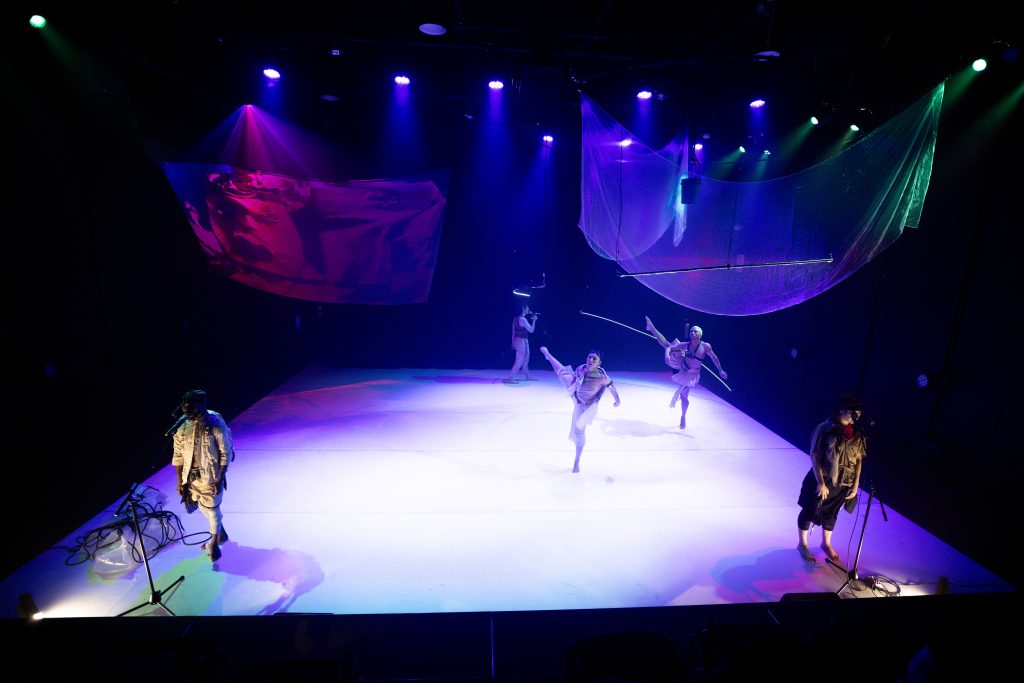
I won’t delve into the technical audio details, but slowdanger & co. incorporate a significant amount of live audio performances that have been known to move audiences to tears.
Technically, “Supercell” utilizes two custom drop systems, an LED sculpture, and custom wireless camera technology, all compactly packed for travel in a ski bag and rolling duffle. The scale of the proscenium piece is massive, as you can see in the image below:
Now, let’s talk tech! The live camera system leverages technology mentioned in a previous Machine Girl blog post: [Link here]. While the Machine Girl box was designed as a standalone switcher for three cameras, “Supercell” uses five cameras, custom LED lights, various body mount harnesses, and easily replaceable batteries to keep things running smoothly for over 4 hours. Instead of using the Machine Girl “switcher,” this project pulls all five cameras live into VDMX by VIDVOX, applies some FX, and then sends a feed out to MadMapper for custom mapping during the show. QLab ties it all together, ensuring seamless triggering of complex cues and custom scripts.
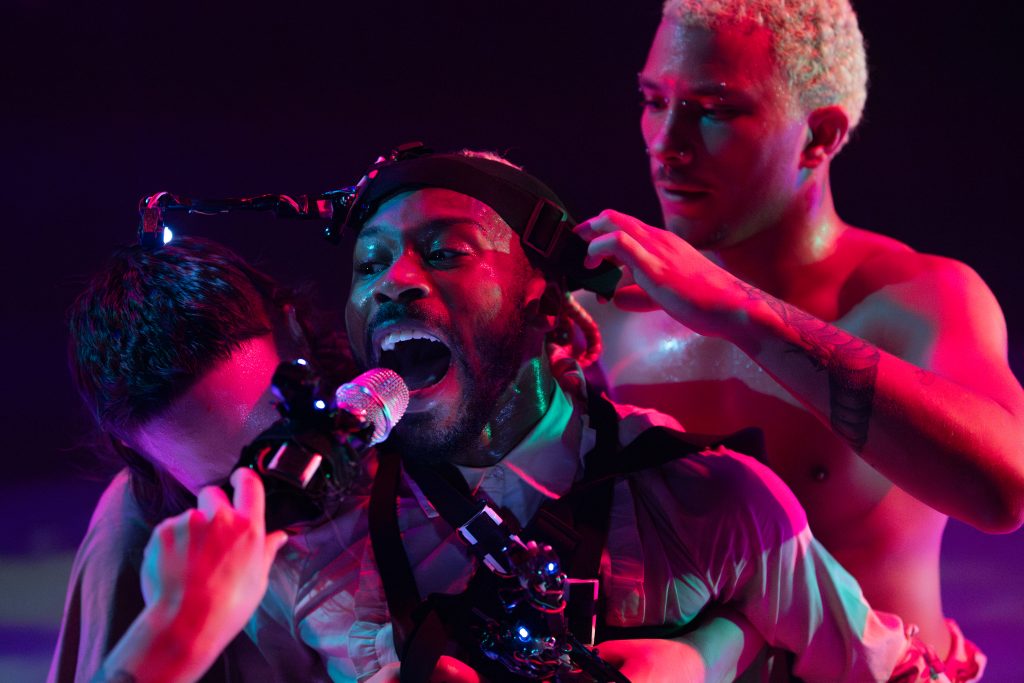
Three separate softwares working perfectly together!
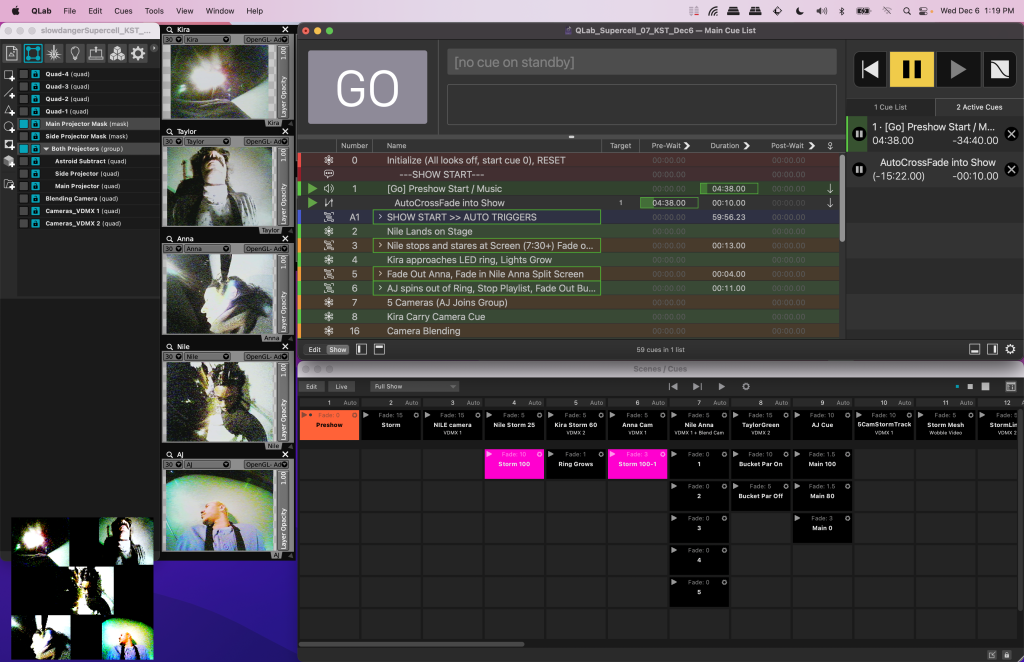
- VDMX handles the live cameras
- Madmapper manages the projection mapping and LED pixel mapping
- QLab runs the show, controls the audio, and triggers the custom drop system
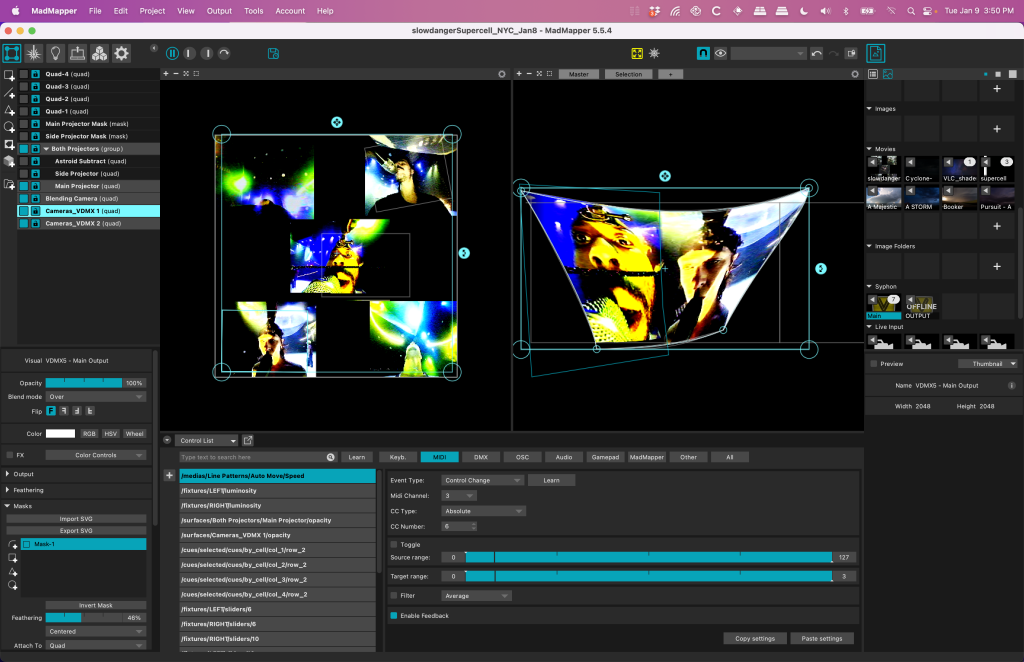
While all three run on the same computer, they offer redundancy to tackle the technical challenges of the performance. Now, onto the heart of this DIY blog post: the custom drop system!
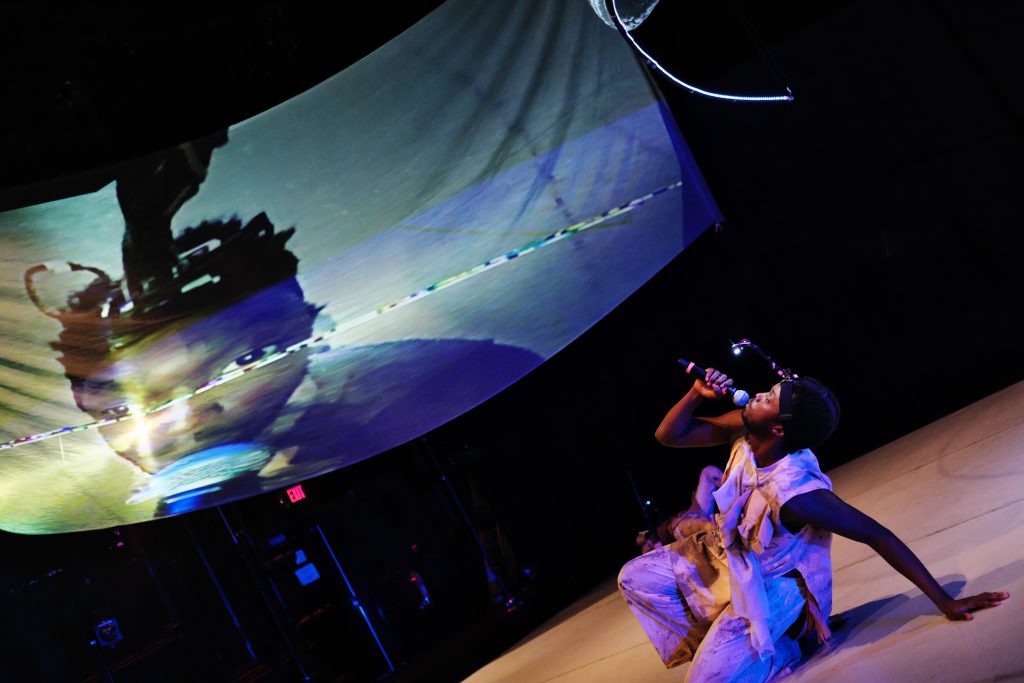
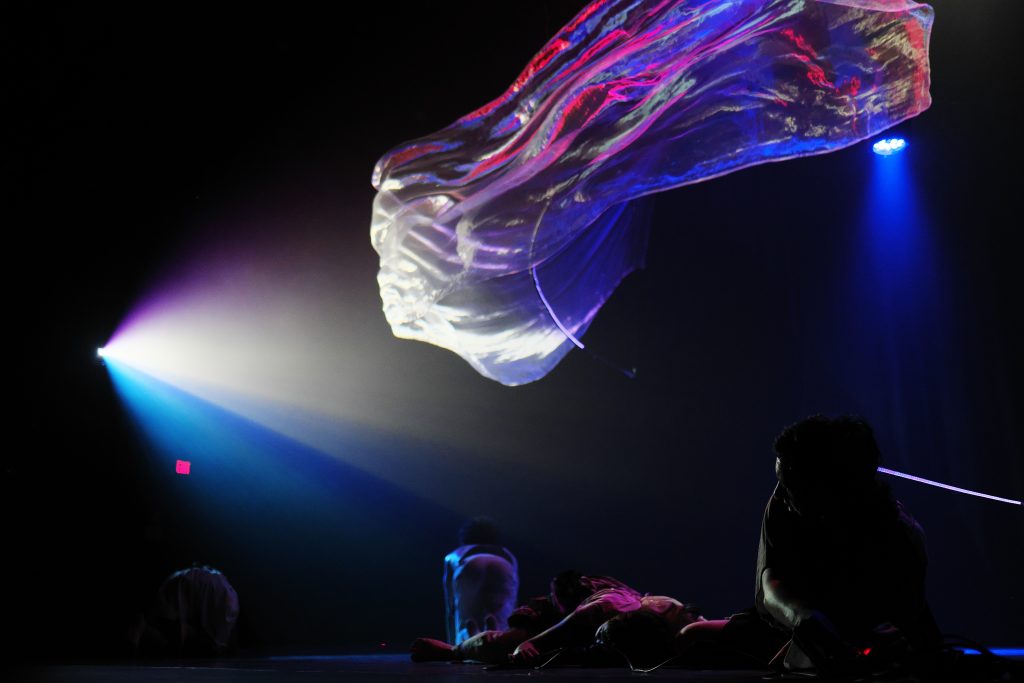
DIY DROP SYSTEM
Currently, a DMX controlled drop system can cost $1,200 per point, but “Supercell” needed a lighter touch for dropping showtex’s ‘feathersilk’ fabric. Enter electro-magnetic locks! With power, the lock opens; stop power, the lock closes. The challenge was triggering it precisely from QLab. Shelly’s ethernet-based relays provided the solution.
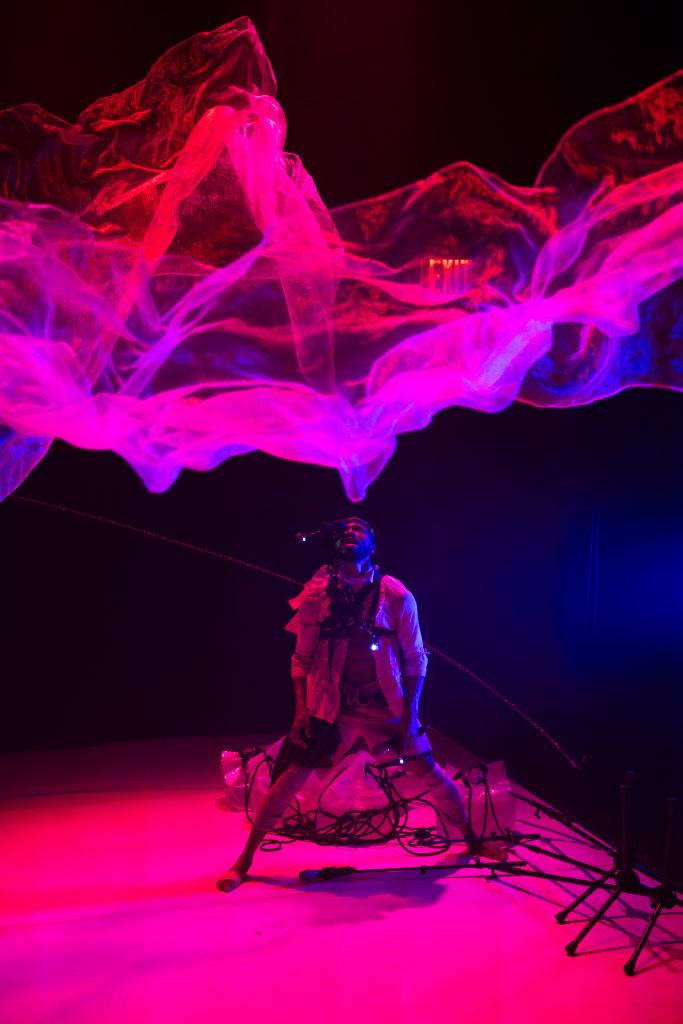
I tested various electro-magnetic locks and settled on a 12V solution for the “sail” (2 points) and a 24V solution for the feathersilk (3 points). The 12V solution supported 35 lbs per point, giving me confidence in its reliability.
To control the drops from QLab, I set up a webhook on the Shelly relay and used a simple curl command in a script cue. It’s a straightforward workflow, but fine-tuning and 3D printing were necessary for flawless execution and fabric preservation. (If you are curious about this type of mount. Check out my “how to mount a projector anywhere tutorial on VIDVOX’s website!)
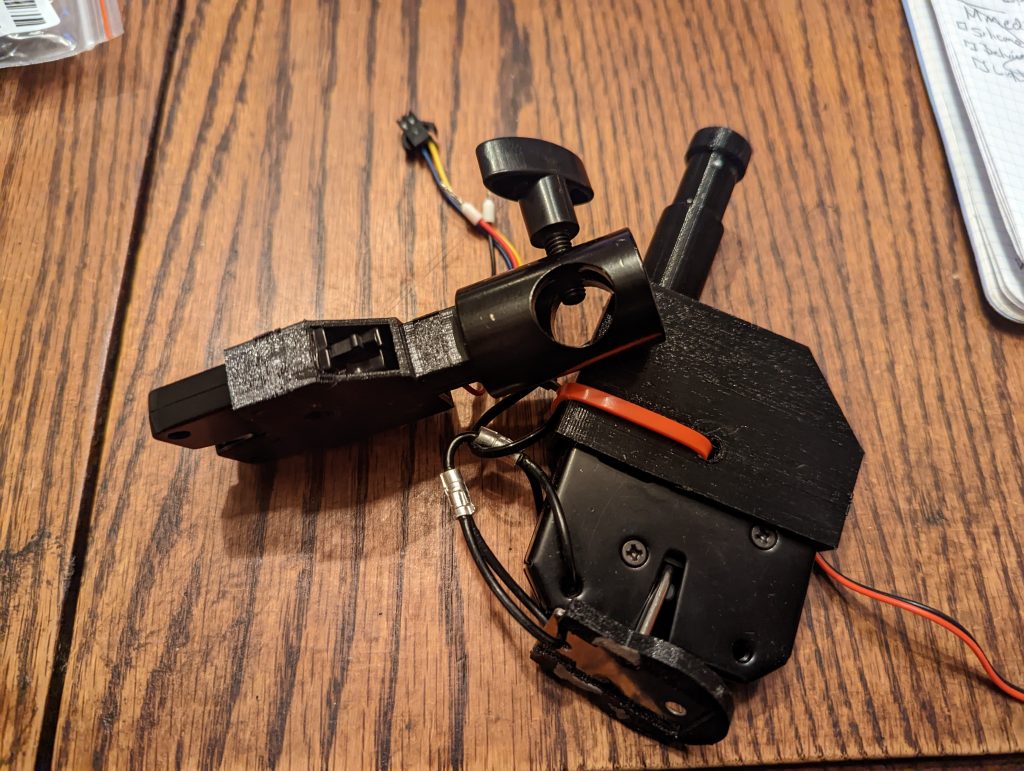
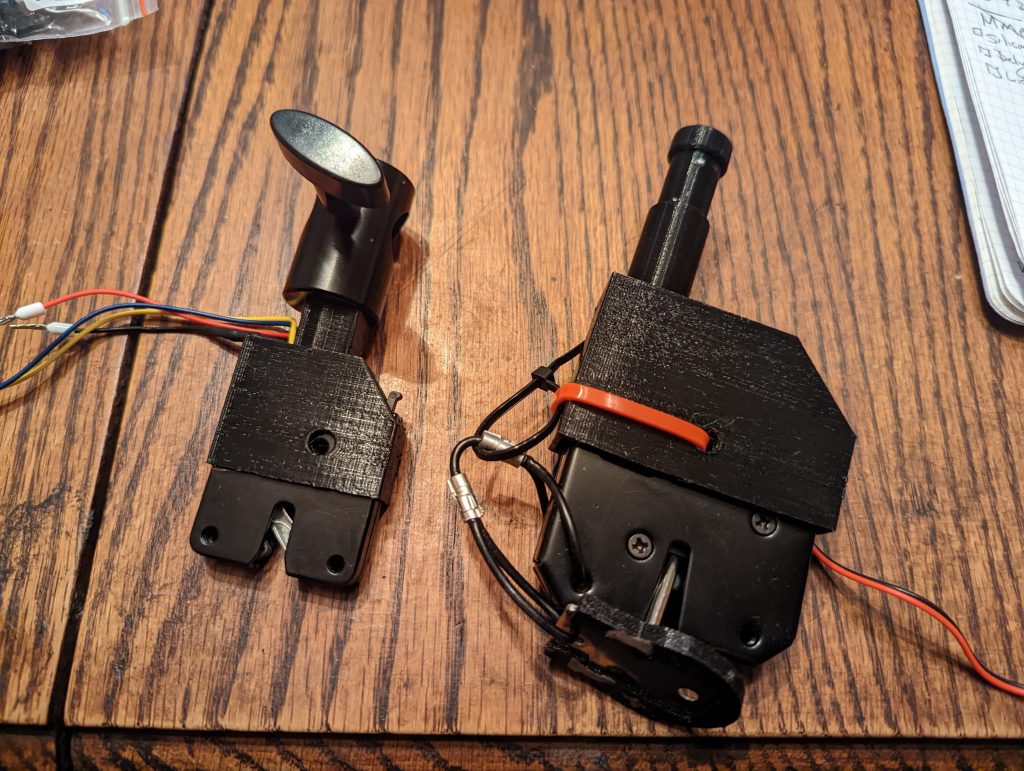
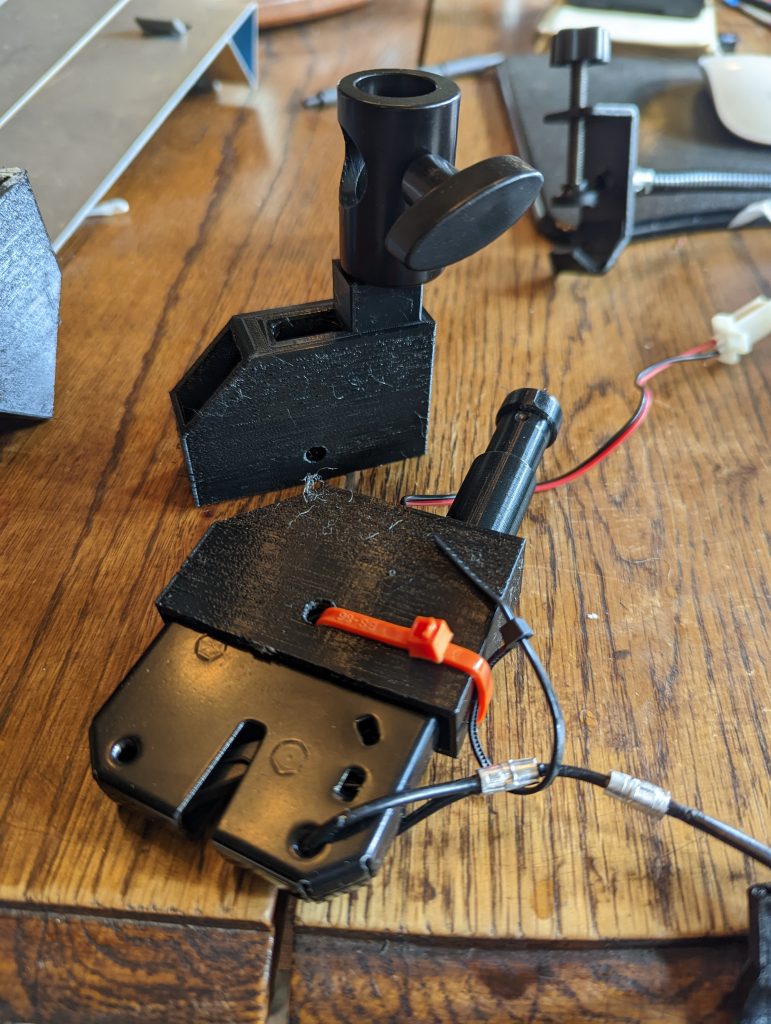

If you’re considering a DIY drop system:
- Do I trust it? Yes! After working out the kinks in 3D printing and how to secure the fabric in place, the 12V drop system triggered perfectly every time 10/10! With the 24V you had to be more precise with the fabric, as the feathersilk is so light, that it was possible for the points to open and close before the feathersilk “fell” out of them. Re-triggering the point fixed this, but I still think the 12V system is the best for all cases (just a little bit harsher on very expensive fabric!)
- Take voltage drop into consideration. This is an important part of wiring for LED strip installations, but also applies to long runs of 12V or 24V DC over distance. The closer your power supply is to the drop points, the better. Let your ethernet be your long cable, not the power lines.
- Make sure you secure your network! I wasn’t going to let it happen to me, but if you are using a network to control your show, and leaving it open or left to “defaults,” the last thing you need is some “curious” kid playing around with their FlipperZero and triggering your drop system mid-show. Luckily, you can turn off Bluetooth and WIFI on the shelly devices, or secure them in a better way. But this still applies to your local network and wireless router if you choose to go that route.
- You can overload these types of locks. At 60 lbs this lock wouldn’t stay closed, and at 40 lbs there wasn’t enough “strength” in the electronics to pull back the mechanism and release the plate, (so it wouldn’t release / open). I also don’t think you should be dropping 35+ lbs from height, but Damien Jalet likes to shoot arrows into the floor while someone performs, so… Who nows. (Fallen Man, 21 mins into the show!) Do all this at your own risk, and test everything thoroughly!
Basic drop system costs (Increase the quantity of locks, PSU Amps, and Shelly Channels as needed):
- 12V 2A electronic lock $15: [Amazon Link]
- 12V power supply (free or $10-40) [Amazon Link]
- Shelly device $15-$70 [Shelly Pro 1][Shelly Pro 3][Shelly Pro 4]
Estimated drop system cost: $80 for a single point setup, with additional points costing $15-20 each.
Oh, and did I mention “Supercell” is an amazing show? Catch us in Seattle at Velocity from March 21-24th, 2024.
A special shoutout to Terry Valencheck, whose invaluable input and expertise were instrumental in the development of our drop system. Thank you, Terry!
QLAB SCRIPT
QLab Script to activate the drop system for Shelly 3 relay. Note: Change the IP address to reflect the IP of the shelly device on your network. This Script Cue offers a delay between the release of two separate drop systems. You can also do this manually from a phone or web browser.
tell application "Terminal" to activate tell application "Terminal" do script "curl "http://192.168.8.31/relay/0?turn=on" " delay 2 do script "curl "http://192.168.8.31/relay/0?turn=off" " in window 1 delay 2 do script "curl "http://192.168.8.31/relay/1?turn=on" " in window 1 delay 2 do script "curl "http://192.168.8.31/relay/1?turn=off" " in window 1 end tell
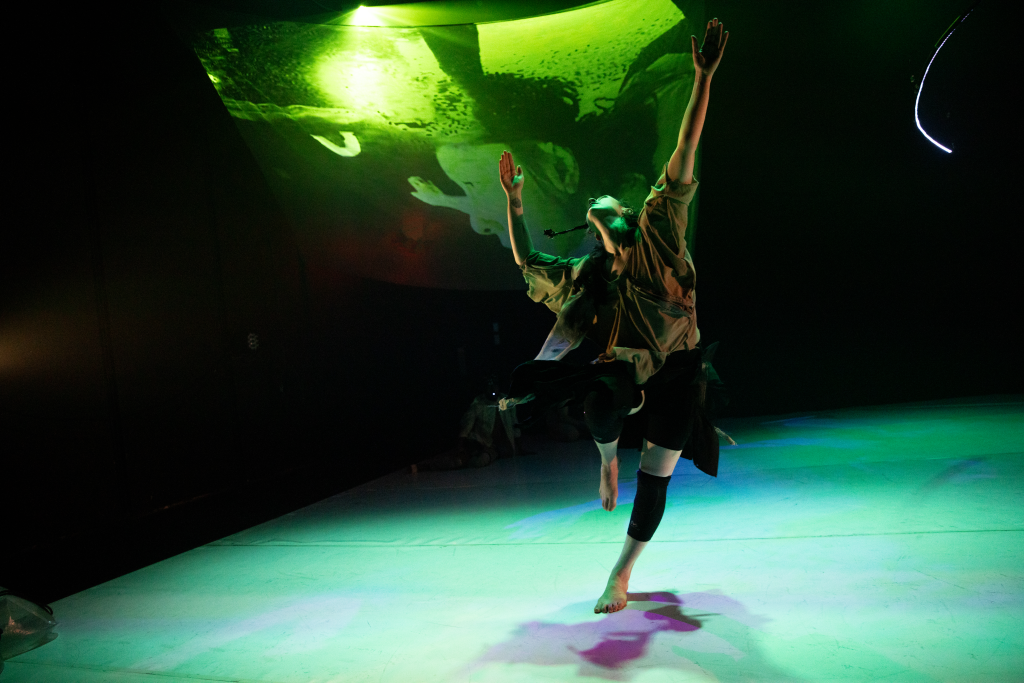
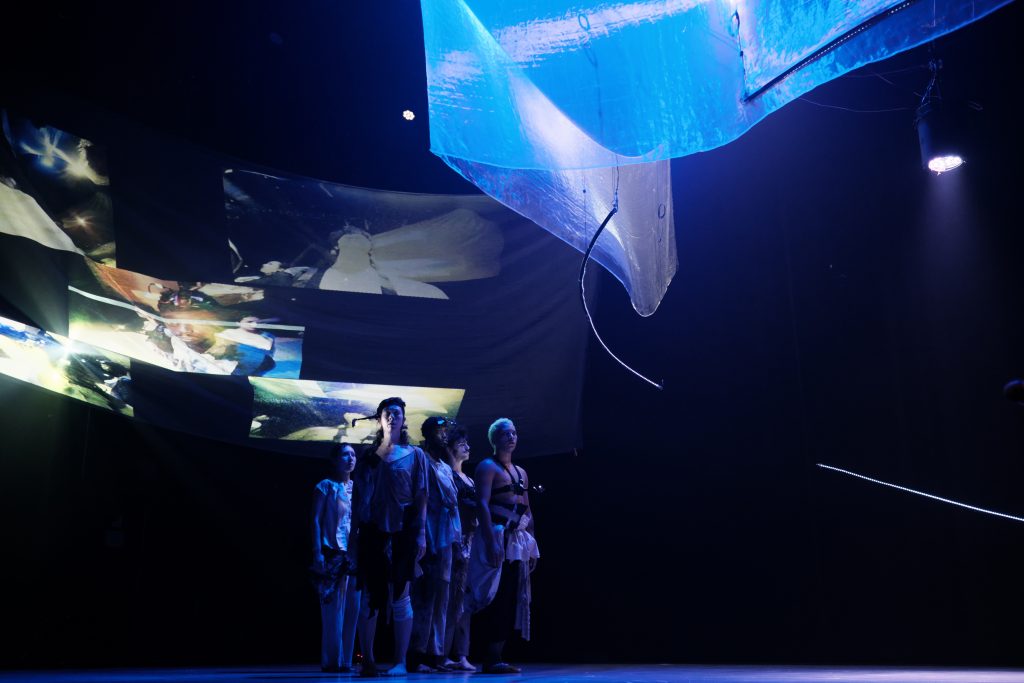
>>> Click here for more information about supercell <<<
SUPERCELL
named a must see by Dance Magazine
Current Tour Dates
available for touring 2024-2026
SUPERCELL is an evening-length multidisciplinary quintet performance, responding to climate change, media sensationalism, desensitization, & environmental collapse. The title refers to supercells, large storms of deep, persistent updrafts often resulting in many tornadoes. While supercells are terrifying, ominous, and harbingers of great damage, they are simultaneously breathtaking environmental events when witnessed from afar. The effect is similar to sensationalist media, instantly amplifying catastrophic events for an insatiable public consumption.
Throughout the creation process we will consult with advisory cohorts in Maryland and Pittsburgh, composed of scientists, educators, climate activists, anthropologists, sociologists, sustainable design experts and a dramaturgical advisor.
In addition to public facing performances, SUPERCELL project also houses a companion workshop titled De-Mystifying the Box. Within this workshop, slowdanger will engage participants in creative process frameworks and somatic experiences to sense deeper into the micro-ecosystems of our bodies. We will use groove, effort, awareness modalities, and authentic movement to move collectively for 1.5 hours. The final half hour will be used to engage in a collective dialogue process surrounding the themes of SUPERCELL and the local impacts of the climate crisis on our Pittsburgh community.
SUPERCELL serves as part 2 in a trilogy of slowdanger works, alongside “VLX” (pt. 1, 2018) and “empathy machine” (pt. 3, 2019). The work will premier in-person in 2023 at the Clarice Smith Performing Arts Center and the Kelly Strayhorn Theater.
After hosting a SUPERCELL technical residency at the National Center for Choreography-Akron earlier this year, NCCAkron Executive/Artistic Director Christy Bolingbroke reflected, “With SUPERCELL, slowdanger has accomplished the best that contemporary art and performance can offer – an embodied experience for the viewer perhaps overwhelmed by processing the enormous weight of today’s issues and the spectrum of feelings that may surface at any moment, even the absolute absurdity of living through these times.”
directed by:
taylor knight | anna thompson
SUPERCELL collaborating artists:
Aj Libert | | Nile Harris
kira shiina | Jasmine Hearn | Christian Warner
SUPERCELL design collaborators:
slowdanger (Sound)
ProjectileObjects (Set and Technology)
Harbour Edney (Lighting)
Mad Recital (Costumes)
Jasmine Hearn (Additional Sound and Bibliography)
advisory committee:
michelle king | Nathan Darity | Jennifer Roberts | Jasmine Hearn | Heather Kelley
project manager:
Joshua Bristow
SUPERCELL is made possible by the New England Foundation for the Arts’ National Dance Project, with lead funding from the Doris Duke Charitable Foundation and the Mellon Foundation..
SUPERCELL is a National Performance Network (NPN) Creation & Development Fund Project co-
commissioned by Kelly Strayhorn Theater and NPN. The Creation & Development Fund is supported by the
Doris Duke Foundation, the Mellon Foundation, and the National Endowment for the Arts (a federal agency).
For more information: www.npnweb.org
Funding for the SUPERCELL was provided by the A W Mellon Fund of The Pittsburgh Foundation
SUPERCELL is also supported by the Opportunity Fund, The Heinz Endowments and the PNC Charitable Trusts, with additional residency support from NCCAkron, The Space Upstairs and New York University’s Tisch School of the Arts Department of Dance.
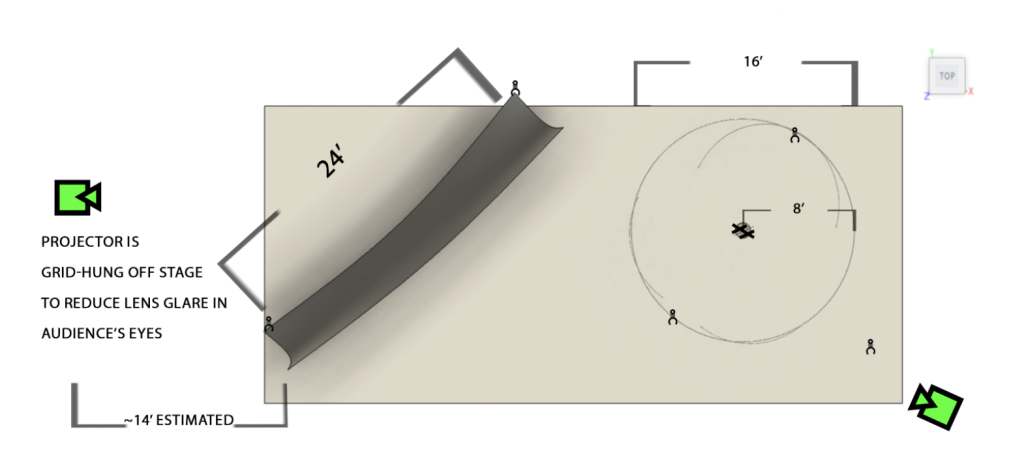
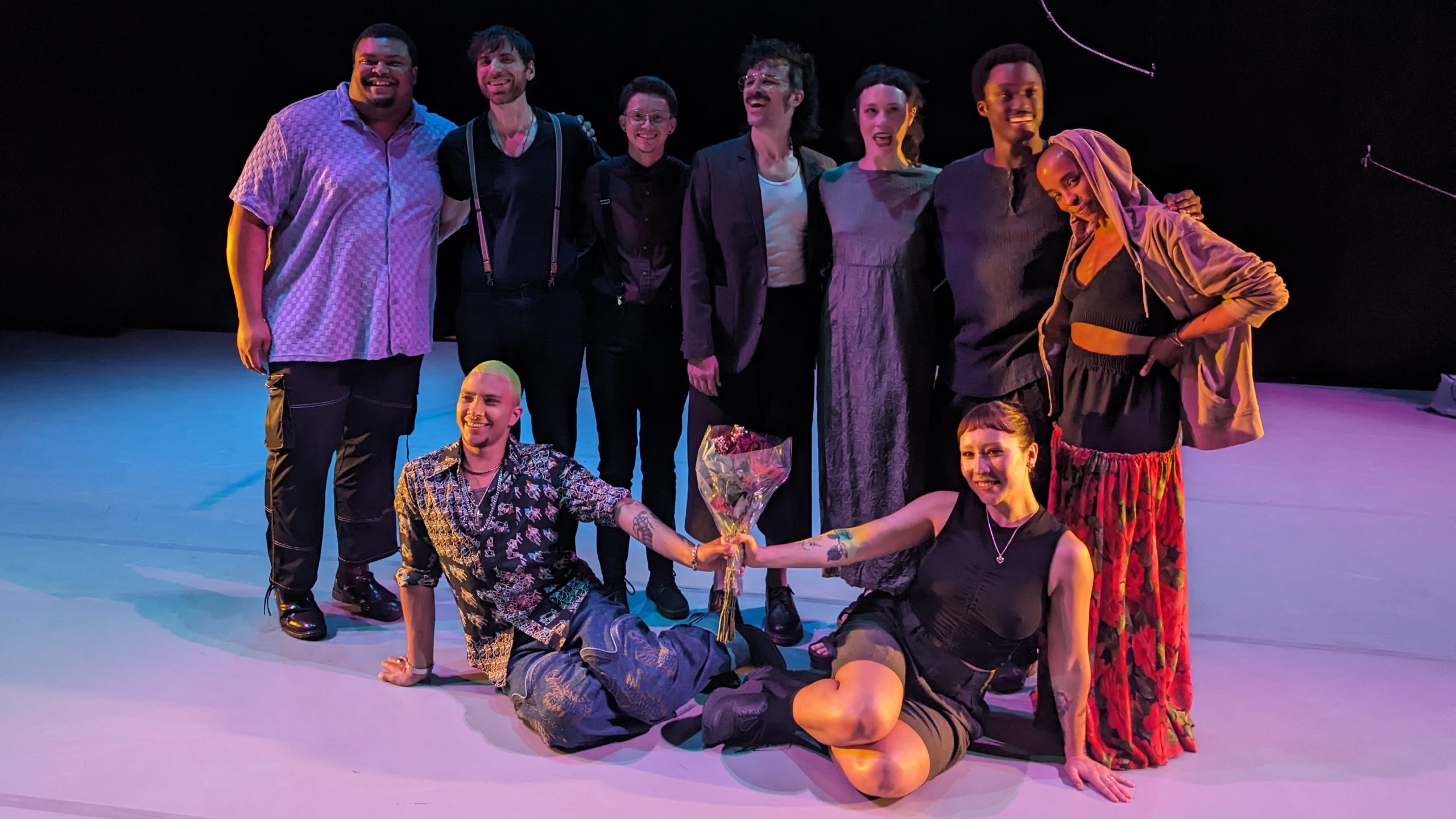
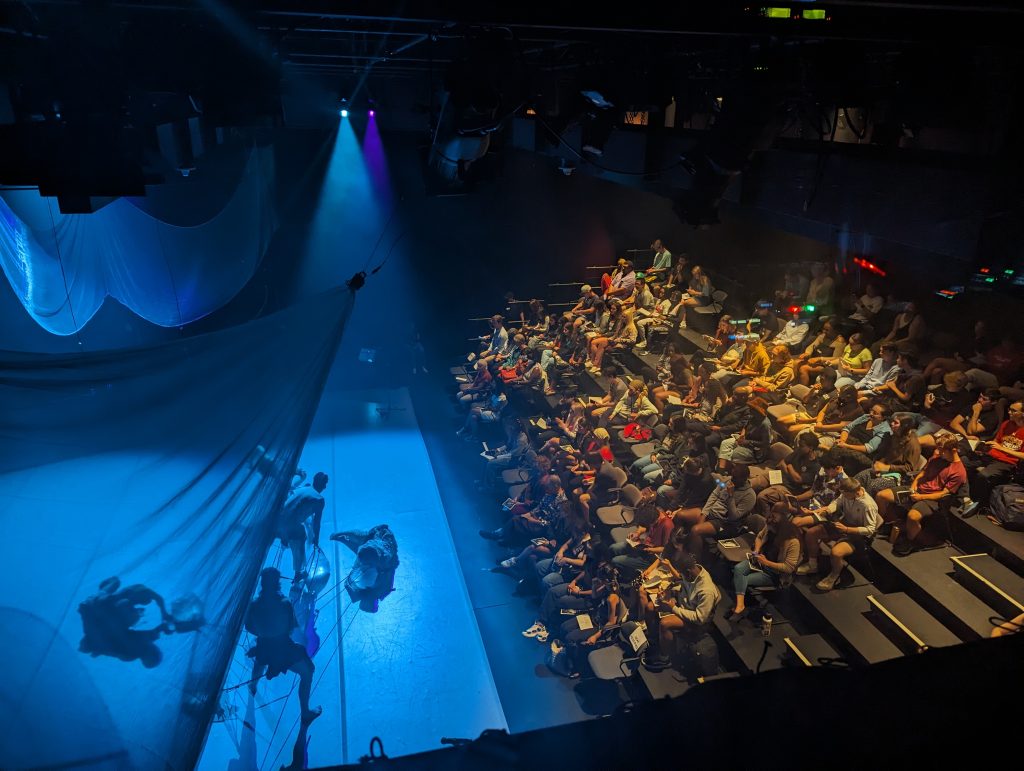
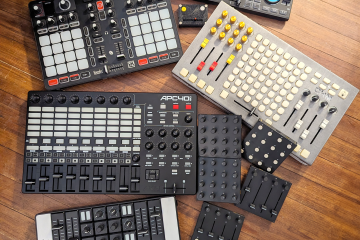
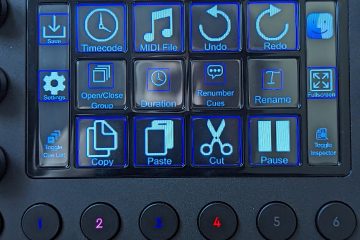
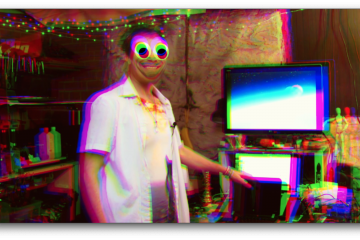
2 Comments
Cody · February 11, 2024 at 3:36 am
Your work is amazing and I really appreciate you putting all this info out there!
ProjectileObjects · February 11, 2024 at 7:51 pm
Ooo, Thank You! Your work is cool too! It’s fun to figure things out then share them with others (for this reason!).